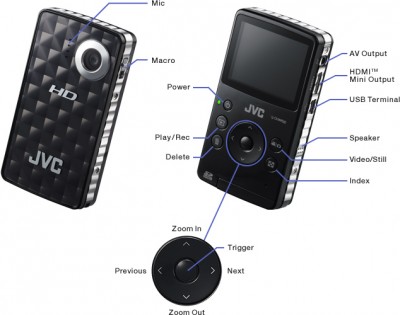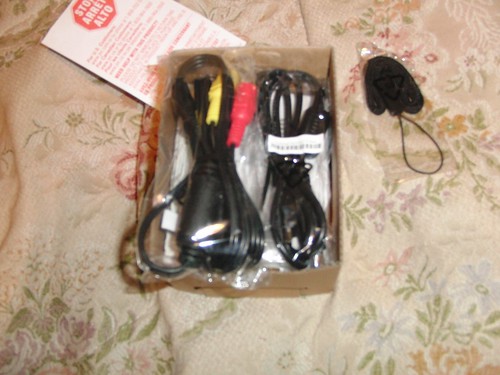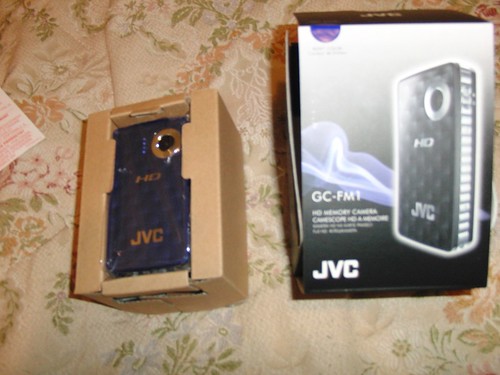A few years ago the pocket camcorder totally changed how consumers see Video Camcorders. No longer do they need to be these big, bulky, expensive things that no one wants to carry around. Every major electronics company now has a version to sell you. The folks at JVC recently introduced their version – the JVC Picsio. How does it stack up in this newly crowded market?
Hardware
The camera has all the trappings of a standard pocket camcorder; it’s less than 1lbs, small and fits in your pocket. There’s a SD Card slot (most camcorders in this class use built in storage) that’s expandable up to 32-Gigs and it comes with an 8 Mega Pixel Camera. The camera felt pretty solid my hand. The metal casing on this camcorder made me feel like I could run a car over it and nothing would happen to it.

For some strange reason instead of including a standard HDMI port with the camera, JVC went with an HDMI Mini port – something I’ve never heard of until I got this camcorder. HDMI is a standard port now; I hate it when companies go off book. If you are going to go with some weird non-standard port, you darn well better include a cable with it. It’s unreasonable to expect people to go out and get a non-standard cable to go with your device. I like that it uses a standard USB jack that will charge the camcorder when plugged in. The camera comes with USB, Composite Video cables and a strap.


The buttons were hard to press, especially the recessed power button. The other buttons didn’t move at all, it’s as if they were stuck in one position so I felt like I had to press extra hard to get them to work. The camcorder’s view finder didn’t work well I found it to be either too dark or too bright to see what was happening on it’s tiny screen. After seeing Sony’s Bloggie camcorder, I now think all pocket camcorders should have a swivel lens. This camcorder includes a built in rechargeable battery. I didn’t spend a lot of time doing battery drain tests, but it seems to last about 1 1/2 and take about an hour to fully charge.
Picture Quality
The Picsio is supposed to have an anti-shake feature built in, but it didn’t work during my field test. Every video I took came out so shaky I felt like I needed Dramamine to watch it. The camcorder didn’t do a good job of color reproduction. I took a couple of test videos in bright sunshine and the video came back muted.
When I shot some footage in-doors the quality was about the same as the outdoor shots. Zooming in and out seemed to work perfectly fine, it mostly stays in focus with very little pixelation or draw in time.
Due to the terrible stabilization feature, I never did manage to take a decent photo with the camera’s 8-megapixel camera. Every shot I took came out a blurry mess. I know I have shaky hands, but this was ridiculous.
Software
The camcorder comes with Pixela Corporation’s Media Browser LE – only available for Windows. The application includes an easy to use interface but I could never get the YouTube uploading to work, it kept giving me errors. The Picsio plays well with Macs I was able to use it with iPhoto and iMovie with no issues.
Conclusion
The unit itself is sleek and sturdy, I love the SD Card Slot but the $199 price point is really steep. I would just spend a couple of extra hundred and get JVC’s awesome Everio – it’s almost as small and lightweight and is a full featured camcorder. At the end of the day though, it’s about the video quality the camera produces and this one doesn’t have the chops. JVC needs to go back to the drawing board.
Final Grade C
EM Review by
Michelle Alexandria
Originally posted 3.28.2010

